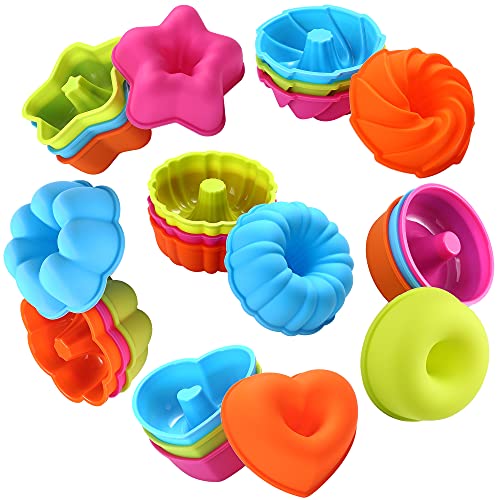To ensure you only get the best baking molds made in silicone, we’ve listed high-quality silicone bakeware in a variety of different shapes and sizes to suit different needs. As a baker, whether you buy an individual item, a pair, or a set of various individual molds - you will never really have enough silicone bakeware to satisfy yourself.
What To Consider When Shopping For the Best Silicone Baking Molds
Most people think that the only thing they need to look out for is food-grade silicone quality when buying baking molds. But how do you figure that out? For some people, price is the ultimate deciding factor if they have a limited budget.
However, it is important to understand that less expensive molds may not be produced from 100% food-grade silicone, and instead, they may include cheap silicone compounds and fillers. Naturally, they’re not safe to use, especially in a high-temperature environment. Therefore, it is crucial that you ponder over some critical factors to ensure you only buy high-quality, non-toxic silicone baking molds.
Baking Molds Material: Should It Be Your Ultimate Deciding Factor?
Silicone is hands-down the best when it comes to ease of use and versatility for baking. However, here are a few things you need to keep in mind.
Picking the right material
Choosing one of many materials is arguably the most important factor when buying baking molds. However, the ideal material is inherently nonstick and lightweight – no wonder silicone is such a hit material for kitchen accessories and cookware!
Paying attention to the quality
The only thing you need to pay attention to is the quality of silicone bakeware you’re investing in. Not all types of silicone baking molds available are created equal. So you need to find the right one that you can trust. Fortunately, you don’t have to dig deeper for those options as the top five we’ve revealed in this guide pass the quality test with flying colors.
Keeping an eye out for food-grade silicone
The best silicone for baking is 100% food-grade. That’s the only way to ensure it is safe to use for cooking and baking. While you can check for product specifications and reviews to be sure, you can also conduct a pinch test to confirm quality.
All you need to do is twist a silicone surface to pinch it and look closely. If you see hints of white, you know it’s not 100% silicone. The best quality will retain its color at this test.
Tips To Help You Take Care of Your Silicone Baking Molds
The best part about using silicone molds is that they’re really easy to clean. Here are the top steps to help you clean and maintain your silicone bakeware. Once you’re done using the bakeware, wipe each piece or mold with a damp soft sponge and rinse thoroughly.
You can use a mild soap or detergent if you need to get rid of mess or larger stains. This is particularly important for residuals such as butter grease or oil. Drying the bakeware is a crucial step. Place it on a flat surface to dry naturally or place it in an oven at 200 degrees for two to three minutes.
If the mold has hard-to-remove food residue, soak it in warm soapy water for a few minutes before wiping it with a sponge. For tougher stains, feel free to clean with water and baking soda paste, as it won’t ruin the bakeware.
Using Silicone Molds – Are They Safe?
Only food-grade silicone is safe for cooking and baking. Silicone has inert materials as ingredients, meaning nothing used to manufacture silicone will penetrate into the food being cooked. It is highly recommended to only invest in high-quality silicone baking molds to ensure maximum safety.
Compared to plastic, silicone is indeed a much safer option because it is both environmentally friendly and durable. In addition to being more heat tolerant, silicone is also free of harmful chemicals like BPA, which are common in plastic.
Other than being safe, there are tons of benefits of using silicone bakeware:
- They’re easy to clean.
- The flexible material they're made of means they are easy to use.
- They offer a range of fun shapes and sizes.
- They’re durable and long-lasting.
- They can easily withstand high temperatures.
- They have outstanding nonstick qualities.





